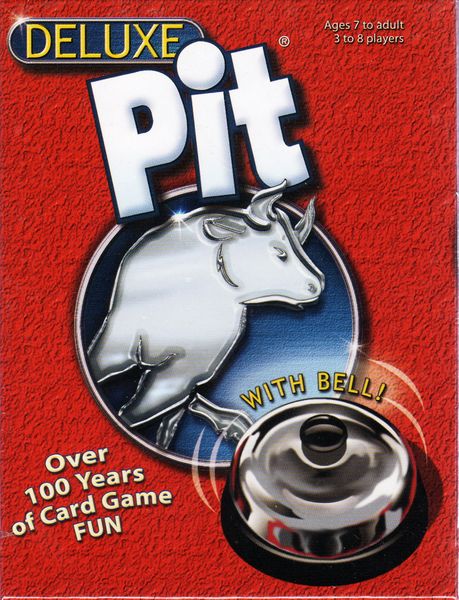Pit (1903) Board Game
Pit is a classic card game that was first released in in 1903. It was designed by Edgar Cayce, Harry Gavitt, and George S. Parker. The game is all about trading and speculation, making it a fun and fast-paced party game for 3-8 players. With its real-time gameplay and set collection mechanics, Pit has been a popular choice for over a century.
Game Components of Pit
How To Setup Pit
To set up Pit, place the Pit Corner board in the middle of the table and prepare a score sheet. The dealer selects a complete set of commodities for each player, shuffles the deck, and deals nine cards to each player. If the Bear and Bull cards are in play, they are included in the deck. Once all players have their cards, they can look at them and decide which commodity to collect. The dealer then announces “The Exchange is open!” to start the trading phase.
Gameplay Mechanics and Game Objective
Player Experience
Pit is a highly interactive and chaotic game that transforms a quiet gathering into a lively, shouting match. Players must act quickly and strategically to trade cards and collect the needed commodities. The game requires minimal rules but a lot of energy and quick thinking. The inclusion of the Bear and Bull cards adds an extra layer of strategy and risk, making the game more dynamic and unpredictable.
Pros
Cons
Personal Thoughts on Pit
Pit is an excellent choice for those who enjoy fast-paced, interactive games that do not require a lot of setup or complex rules. It is ideal for large groups, as the game becomes more exciting with more players. However, it may not be the best fit for players seeking a more strategic or calm gaming experience. Additionally, players with physical accessibility considerations should approach with caution due to the game’s physically demanding nature. Overall, Pit is a classic game that offers a unique and energetic gaming experience, making it a great addition to any game collection.
We are supported by our audience. When you purchase through links on our site, we may earn an affiliate commission, at no extra cost for you. Learn more.

